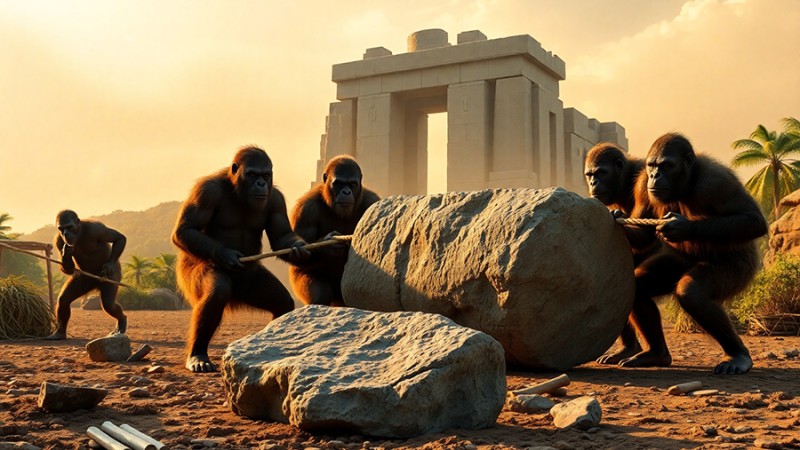The Forgotten Servants of the Gods – Humanity's Memory of Homo Erectus

Introduction
Across nearly every ancient culture, stories persist of beings who were not quite human—but walked upright, lived in forests, served gods, and vanished into myth. From the Vanaras of India to the Wild Men of Mesoamerica, these legends may not be fiction. They may be distorted memories of a species long gone—but once very real: Homo erectus.
Ancient Myths, Familiar Forms
In biblical tradition, the Book of Genesis describes the creation of humans in stages. While there is no mention of other beings before Adam in the canonical Bible, some Jewish mystical texts and apocryphal traditions speak of pre-Adamic beings—rough, incomplete creations formed from dust before Adam. These beings were said to serve basic purposes and were not made in the image of God. Though speculative, these traditions may reflect a cultural memory of primitive hominins like Homo erectus—upright, laboring, but not yet fully human. These beings may reflect a cultural memory of primitive hominins like Homo erectus—upright, laboring, but not yet fully human.
In Sumerian mythology, the gods created the Lullu (or Lulu Amelu)—a primitive, hairy, obedient being—specifically to do their work. These early humans were not equals but designed laborers, formed from clay and the blood of a slain god. Their task: relieve the gods of toil. They were subservient, not autonomous—perfectly echoing the functional role of Homo erectus.
India’s Vanaras were intelligent, bipedal beings with strength, loyalty, and military coordination. They served Lord Rama in the Ramayana—building bridges and waging war.
In Mesoamerica, tales of the "man from Coy" or wild men described hairy, upright beings that predated humanity—often associated with failed creations or ancient servitors.
In Chinese legend, the Xing-Xing or Yeren were wild, hairy forest men that could walk upright and sometimes interact with humans.
In African oral traditions, especially among the Kalahari Bushmen, there are stories of ancestral beings who resembled apes or hairy men, who were wise but slowly disappeared.
What if these were all memories of Homo erectus?
The Case for Homo Erectus
Homo erectus lived for over 1.5 million years, spanning Africa, Asia, and beyond. They:
Walked upright
Used tools and fire
Lived in structured groups
Possibly had rudimentary language
Coexisted with early Homo sapiens in many regions
They were almost human—but not quite. And their interactions with early humans may have been profound.
Servants, Not Equals
In many myths, these “beings” are not equals to gods or humans. They are builders, watchers, helpers, or sacrificial warriors. This mirrors a possible reality:
That advanced beings—possibly extraterrestrial visitors remembered as “gods”—may have used Homo erectus as laborers, messengers, or soldiers.
Is this why we see:
Bridge building in the Ramayana?
Subhuman builders in Mayan myths?
Forest spirits in Chinese tales?
It may not be myth—it may be ancestral memory.
The Tail That Wasn’t There
India has no native apes—only monkeys. Over time, as Homo erectus faded from memory, their image may have been recast using local animals—hence the tail added to Vanaras, turning hominids into “monkey-men.”
Just as Egyptian gods were given animal heads and mythic traits, symbols replaced species.
Conclusion: A Lost Link in Human Memory
Perhaps Homo erectus didn’t vanish. Perhaps they remained in story, ritual, and symbol—remembered not as cousins, but as servants of the gods.
We see their echoes in:
The Vanaras who built bridges
The Wild Men who fled to the forest
The Yeren who still haunt modern cryptid reports
What if the myths are not inventions—but distortions of a forgotten chapter in our shared past?
Their bodies may have turned to dust. But their memory lives on—disguised in myth, and waiting to be uncovered.


Leave a comment